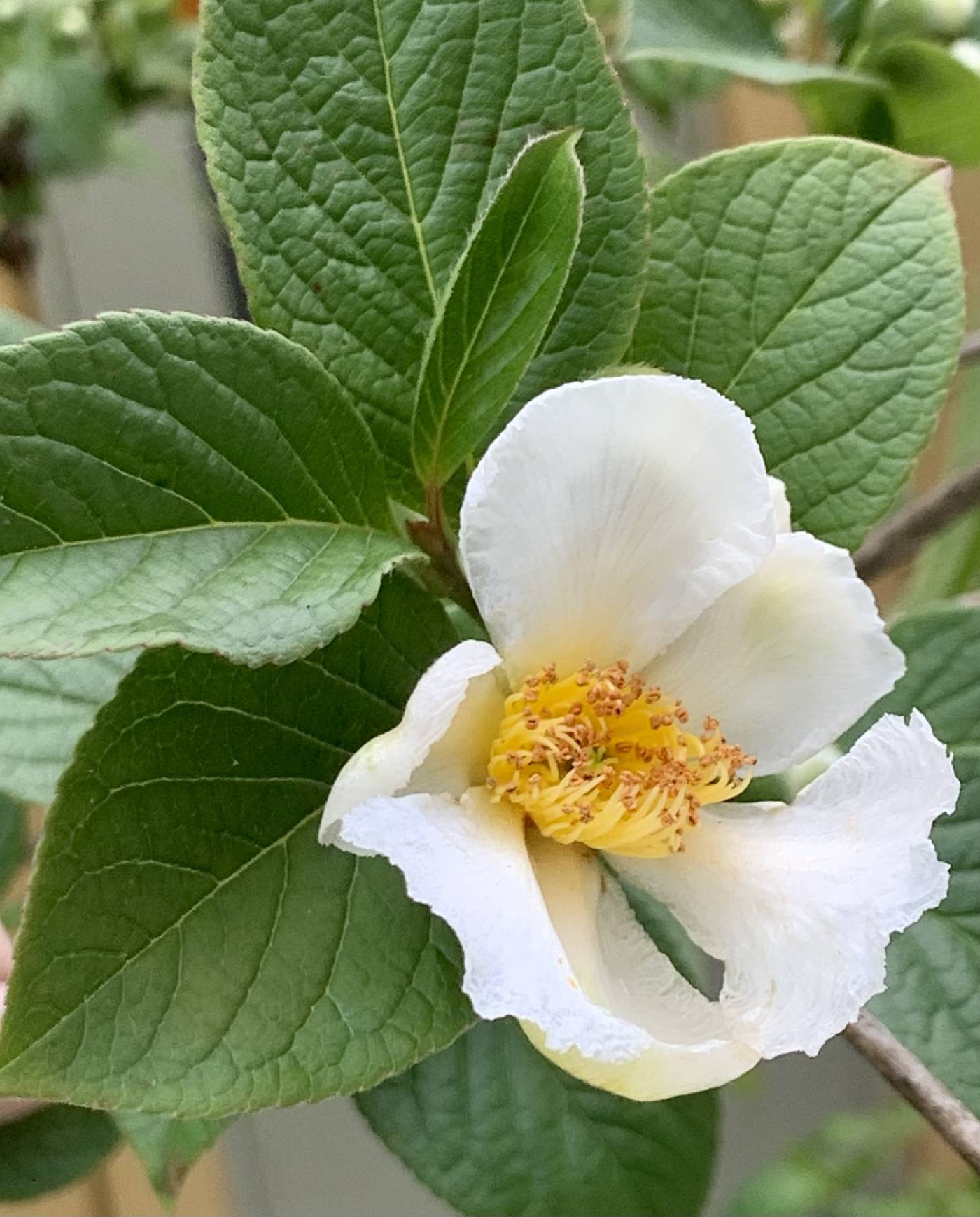Theaceae
|
Theaceae |
|
|
Shrubs or trees, glabrous or hairy. Leaves persistent or deciduous, alternate [spiral or distichous], simple; stipules absent; petiole present; blade coriaceous or chartaceous, margins toothed [entire], teeth deciduously gland-tipped. Inflorescences axillary, flowers solitary [2-3], bracteate. Flowers bisexual; perianth and androecium hypogynous; sepals [4-]5[-14], distinct or connate proximally, concave, relatively thick; petals 5(-8)[-14], distinct or connate proximally; nectary disc absent; stamens (50-)75-125(-150), in 1-5 bundles or not bundled, connate proximally or distinct, usually adnate to petals or corolla; anthers versatile [basifixed], 4-locular, dehiscent by longitudinal slits; pistils 1, [3-](4-)5(-6)[-10]-carpellate; ovary superior, [3-]5[-10]-locular; placentation primarily (falsely; H. Keng 1952) axile; ovules anatropous (campylotropous), bitegmic, tenuinucellate; styles 1 or 5[-6], simple [branched]; stigmas 1-5[-7], usually lobed. Fruits capsular, woody, dehiscence loculicidal and septicidal, [rarely irregular or fruits drupaceous]. Seeds 2-20, reddish brown to dark brown, compressed or lenticular [angular], sometimes winged, (testa vascularized, ± lignified); embryo straight, rarely curved; endosperm nuclear, usually slight. Theaceae are found throughout warm-temperate, subtropical, and tropical forests; they are most diverse in the Old World in numbers of genera and species. Each genus is restricted to a single major geographic area (e.g., Asia versus New World tropics) except for Stewartia, with two species found in eastern North America and all other species restricted to Asia. Molecular phylogenetic analyses indicate that Theaceae should be defined to include only subfamily Theoideae of A. Cronquist (1981). These analyses place Theaceae in Ericales of the Asterid I clade (Angiosperm Phylogeny Group 1998, 2003); identification of the closest relative remains elusive despite the accumulation of many data sets (A. A. Anderberg et al. 2002). The other closely related members of Cronquist´s Theaceae, Ternstroemioideae (Ternstroemiaceae of Angiosperm Phylogeny Group 1998 and Anderberg et al.; now Pentaphylacaceae of Angiosperm Phylogeny Group 2003 and J. Schönenberger et al. 2005), do not occur in the flora area. Morphological (H. K. Airy Shaw 1936), developmental (Tsou C. H. 1998), and molecular data (L. M. Prince and C. R. Parks 2001) identify three tribes within Theaceae in the narrow sense. Relationships among the tribes remain unclear, and significant disagreement continues over the circumscription of genera and species (see Prince 2007). Taxonomy here follows Prince and Parks.
|
|
